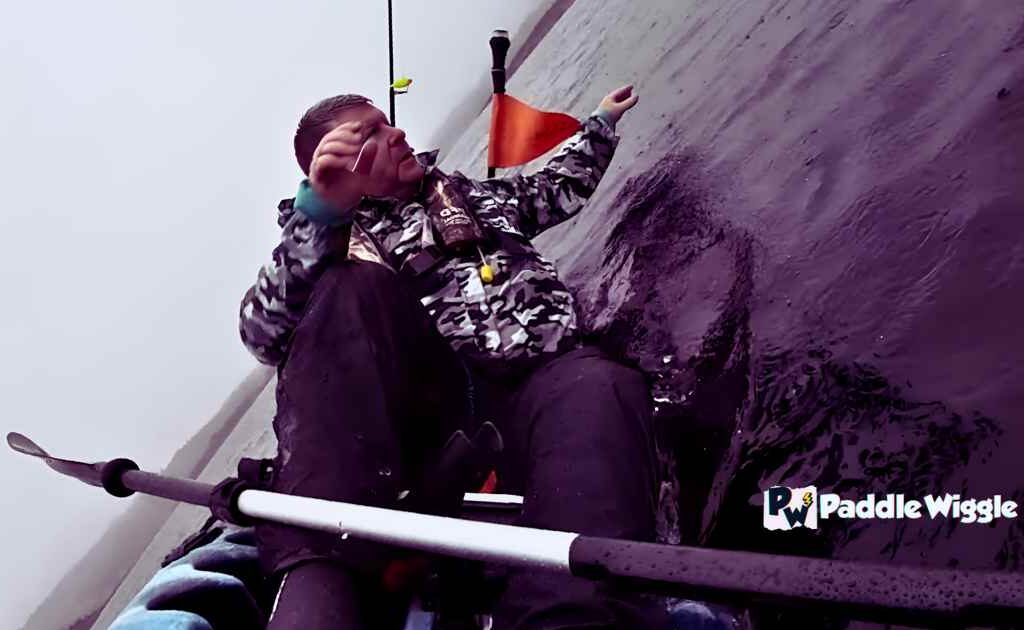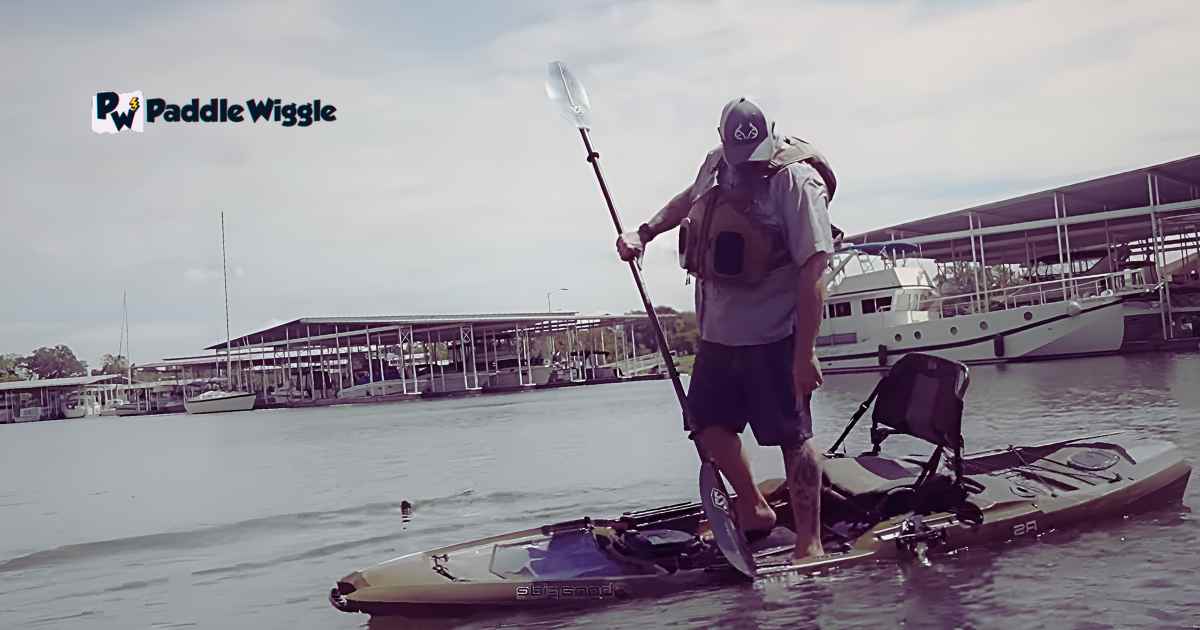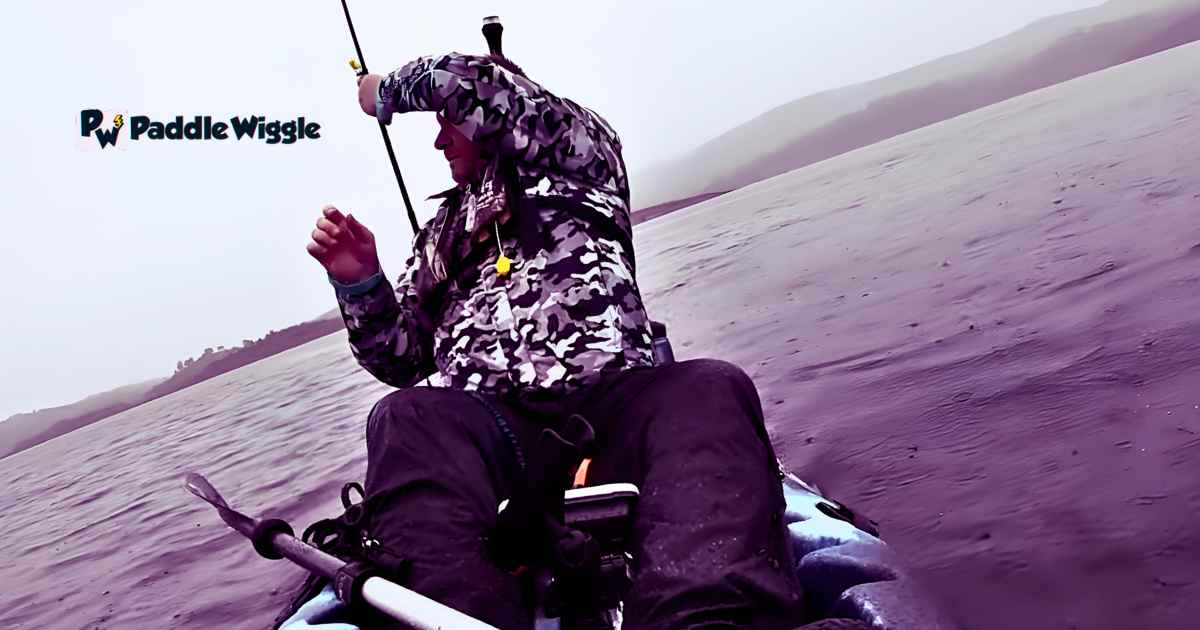Kayaks are popular watercraft for fishing, paddling, and enjoying a day out on the water. But with different types of kayaks made for different adventures, some are designed for fishing, while some are for touring. But they all vary in their capacities.
But there’s one question that often arises: Can you go over the weight limit on a kayak? The short answer is NO. Going over the weight limit can put your balance at risk and cause your kayak to sink or capsize.
Manufacturers set a kayak’s weight limit based on its design, materials, and buoyancy. It serves as a “safeguard,” ensuring your safety and maintaining the kayak’s stability. Exceeding this limit can jeopardize the harmony between you, your kayak, and the water.
It’s not just about the weight of the person riding the kayak; it includes the equipment and other items you bring along for your adventure.
That’s why it’s crucial to understand the weight limit of your kayak. It ensures added safety and an enjoyable experience on the water.
So, let’s dive in.


Contents
Consequences of exceeding weight limits On A Kayak
Going over the weight limit on a kayak can affect your overall performance. This puts your safety at risk and makes it harder to kayak well.
Let’s take a closer look at what can happen if you go over the weight limit:
Makes It Harder To Balance A Kayak


It’s harder to stay balanced if you are exceeding the weight limit on a kayak. And you might tip over easily!
Kayaks are made to stay steady and balanced within a certain weight limit. If you exceed that limit, the kayak becomes wobbly and more likely to tip over or flip completely. This can be really dangerous, and you could end up falling into the water unexpectedly.
It’s tougher to steer and control the kayak
When you put too much weight on a kayak, it becomes harder to steer and control where it goes. Turning sharply or avoiding obstacles becomes more difficult.
It’s like trying to push something heavy uphill – it takes a lot of effort, and the kayak doesn’t respond as quickly. This means you might not be able to avoid things in the water or react to changes, which can lead to accidents.
Decreased Buoyancy
Every kayak has a specific amount of buoyancy designed to keep it afloat. Exceeding the weight limit reduces the kayak’s buoyancy, causing it to sit lower in the water.
And when this happens, waves or splashes can more easily get inside the kayak. As a result, the kayak becomes less safe, and there is a higher risk of it taking on water or even sinking.
The kayak can get damaged
Kayaks are built to handle a certain amount of weight. Exceeding the weight limit puts too much strain on the kayak’s structure, like the hull (the outer shell), seams, and attachments. This extra stress can lead to cracks making it more susceptible to leaks.
Kayaking becomes harder and less fun
When you overload a kayak, it doesn’t perform as well. It becomes slower, less responsive, and more tiring to paddle. It’s like trying to ride a bike with flat tires or heavy bags hanging from it – it’s just not as enjoyable or easy.
Kayaking is meant to be a fun and exciting experience, but going over the weight limit can take away from that enjoyment.
Tips for staying within the weight limits on a kayak


Distribute the weight evenly
If the kayak is unevenly loaded, it can become unsteady and more prone to tipping over. Think of it like a see-saw. It tips to that side if you have all the weight on one side.
So to stay within the weight limits on a kayak, it’s important to distribute the weight evenly. This includes placing heavier items close to the center of the kayak. It helps evenly distribute the weight and prevents the kayak from tilting to one side.


So, when you’re loading your gear onto the kayak, take a moment to think about where you place each item. Try to keep things balanced from side to side and front to back. This way, you’ll maintain better control and stability while paddling.
Consider your body weight and gear
When preparing for a kayak adventure, it’s important to consider both your body weight and the weight of your gear to your kayak’s capacity. This means considering how much you weigh and your equipment weigh.
Start with your body weight. You need to be mindful of how much you weigh because it adds to the overall weight of the kayak. If you’re kayaking with a partner, you’ll also need to consider their weight. This also includes pets that will be joining you on the kayak.
Make sure the combined weight of everyone stays within the limits set by the manufacturer.
After that, think about other stuff. Think about the equipment and supplies you plan to bring with you on your kayaking adventure.
Are you planning to do some fishing? If so, you’ll need to consider the weight of your fishing tackle.
Are you planning to camp overnight? Then you’ll need to consider the weight of your camping gear, such as a tent, sleeping bag, and cooking equipment.
If you’re nearing the weight limit, you may need to make some adjustments. You can either lighten your load by bringing less gear or consider a kayak with a higher weight capacity. It’s always better to err on the side of caution and prioritize your safety.
Learn to prioritize and downsize
When it comes to staying within the weight limits of a kayak, it’s important to learn how to prioritize and downsize the gear you bring along. This means carefully choosing what you need and finding ways to reduce your overall weight.
If you often find yourself reaching the maximum weight limit of your kayak, it’s a sign that it’s time to reassess what you bring on your outings. Start by making a list of the essential items you absolutely need for your adventure. Think about the activities you’ll be doing and the specific gear required.
Once you have your list, look for ways to prioritize and downsize. Consider if there are any multi-purpose items that can serve multiple functions. For example, a lightweight camping stove can also cook meals and boil water.
You can also explore compact alternatives to save space and weight. Look for gear that is specifically designed to be lightweight and portable. This might include collapsible water bottles, compact sleeping bags, or foldable camping chairs.
And it’s always best to pack smartly by organizing your gear efficiently. Utilize dry bags or storage containers that fit well in your kayak and make use of every available space. This can help you optimize your storage while keeping the weight in check.
Be mindful of weight changes during your trip
It’s important to be aware that the weight of your kayak can change during your trip. There are certain factors that can contribute to this weight change, such as waterlogged gear, wet clothing, or accumulated debris.
As you paddle, water splashes and can get into your kayak, making your gear or clothing wet. This water adds extra weight to your kayak. Additionally, if you encounter rain or rough waves, more water can enter the kayak, further increasing its weight. It’s important to be mindful of these changes and take them into account.
Furthermore, debris like seaweed, leaves, or sand can get caught in the storage compartments or on the hull of your kayak. This can add weight and affect your kayak’s performance. Regularly check for and remove any debris to maintain the intended weight limits.
To stay within the weight limits of your kayak, it’s crucial to assess and manage your weight during your trip regularly. Take a moment to evaluate the condition of your gear and clothing. If anything has become waterlogged or excessively wet, consider wringing out the water or finding a way to dry them if possible. This will help reduce the additional weight caused by water absorption.
Additionally, periodically check for any debris that may have accumulated in your kayak. Remove any excess seaweed, leaves, or sand to ensure your kayak remains lightweight and maneuverable.
Choose lightweight gear
Before purchasing any gear, do some research and read reviews to find lightweight alternatives.
This will help you find lightweight gear that won’t weigh you down.
Look at different brands and models of gear to find the ones that are the lightest. You want gear that is easy to carry and will make your kayak manageable. Compare the weights of different options to see which one is the lightest but doesn’t compromise quality.
Some materials are lighter than others. When you’re choosing gear, look for items made from lightweight materials like aluminum, carbon fiber, or lightweight fabrics. These materials are strong but will only add a little weight to your kayak.
Alternative Options For Carrying Maximum Weight On A Kayak
When you need to carry maximum weight on your kayak, and you’re reaching the weight limit, there are a few alternative options you can consider.
Here are a few of them.
Use Dry Bags or Waterproof Containers
Consider using dry bags or waterproof containers to store your gear. These bags and containers are designed to keep your belongings dry even if they come into contact with water. You can place your gear inside dry bags or waterproof containers, such as clothes, food, or electronics.
Upgrade your kayak
If you’re consistently struggling to stay within the weight limits of your kayak, upgrading your kayak might be a helpful solution.
Consider upgrading your kayak to a model with a higher weight capacity. Look for fishing kayaks, as they can carry up to 400 lbs.
By upgrading your kayak, you’ll have more flexibility in the amount of weight you can carry on your trips. It will provide you with a safer and more enjoyable experience on the water, as you won’t have to worry as much about exceeding the weight limits.
Learn to Increase the Capacity
To increase a kayak’s capacity, you can learn techniques to optimize your load and make the most of the available space.
One way to carry more weight is by adding additional support to your kayak. Float bags are inflatable bags that you can place inside the kayak to increase its buoyancy. These bags help the kayak float higher in the water, allowing it to carry more weight without compromising stability.
It’s important to note that float bags only increase a little capacity. So, you should always consider the kayak’s design and limitations.
Are There Any Risks Associated With Exceeding The Weight Limit On A Kayak?
Yes, there are risks associated with exceeding the weight limit on a kayak. Exceeding the weight limit can cause the kayak to become unstable and harder to control, increasing the risk of capsizing.
Additionally, exceeding the weight limit can cause damage to the kayak or its components, such as the hull. This can lead to costly repairs or even replacement of the kayak.
Are There Specific Types Of Kayaks That Can Handle More Weight Than Others?
Yes, there are specific types of kayaks that can handle more weight than others. Fishing, touring, and sit-on-top kayaks are designed to handle more weight.
These kayaks tend to be the longest and widest, which helps them stay stable in the water even when carrying a heavier load. Sit-on-top kayaks usually have a wide, flat bottom that helps them carry heavier loads.
Are There Any Modifications That Can Be Made To A Kayak To Increase Its Weight Limit?
Yes, modifications can be made to a kayak to increase its weight limit. These include adding additional flotation and storage, reinforcing the hull and frame, and adding additional supports and bracing.
Additionally, adding a rudder can improve the kayak’s tracking and stability, which can also help support a higher weight limit.
Final Words
To sum up, you should stay within a kayak’s weight limit. Exceeding the limit can lead to decreased stability, increased risk of capsizing, impaired maneuverability, compromised buoyancy, potential structural damage, and reduced overall performance.
These risks can put you in danger and diminish the pleasure of your kayaking experience. So learn to optimize your equipment and stay within the weight limit.



